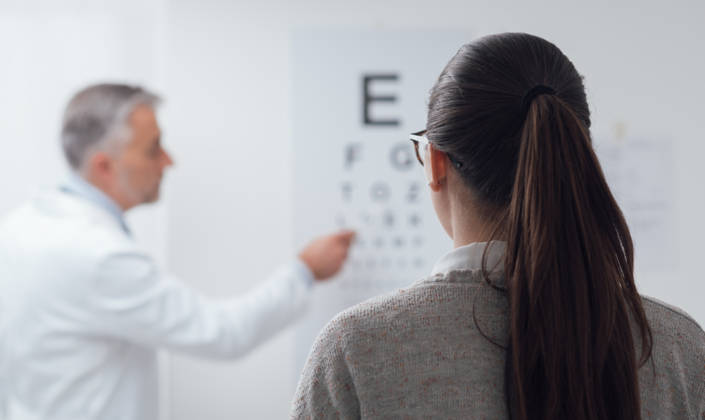
These printed or digital plates representing lines of letters in different sizes are classic flaps for eye examinations. They are called the “Monoyer scale”, after their inventor Ferdinand Monoyer, and are available in several versions or “optical models”. “The size of the lines, and therefore the letters, decreases, which makes it possible to evaluate visual acuity, that is, the ability to distinguish letters,” explains Catherine Gross, an ophthalmologist at Goule Eye Hospital. There are two versions of the ladder: one is placed 3 meters away from the person and the other is placed 5 meters away. The latter allows you to test distance vision.
One eye after the other, then both
During the examination, the eye doctor covers one of the person’s eyes and asks him to read letters with the other eye. Then the second eye is tested. The examination continues with both eyes at the same time to evaluate binocular vision.
The smallest line a person can decipher provides a score representing visual acuity. This value provides a basis for knowing whether there is a myopia (refractive disorder) such as nearsightedness, farsightedness or astigmatism, and therefore whether the person needs optical correction. A complete eye examination will then indicate the value of the lenses required (in diopters).
A test similar to the Monoyer scale, called the Parinod scale, is performed in near vision using text written in paragraphs in increasingly smaller letters. “These various examinations are performed from a very young age to monitor the development of visual acuity over time and to report possible decline in visual acuity, associated with possible pathology. Hence, regular examinations are recommended throughout life,” says the ophthalmologist.
Different versions: optotypes
In order to adapt the test to a person’s age, language level or vision problem for example, it is possible to change the characteristics on the Monoyer scale, visual patterns. “Models with letters are the most common, but there are also models with numbers or drawings, for example for children,” explains Catherine Gross. For people with poor eyesight, we offer a backlit version that improves contrast. Another scale, called the Armagnac scale, is used for illiterate people. It represents ‘E’ or ‘C’ in different directions.”

:quality(70):focal(1515x1438:1525x1448)/cloudfront-eu-central-1.images.arcpublishing.com/liberation/X7T4FCTMWVF2NACF35CCUHUPTE.jpg)




